Written on September 21, 2015
From Paro, Bhutan
59 Degrees F and raining
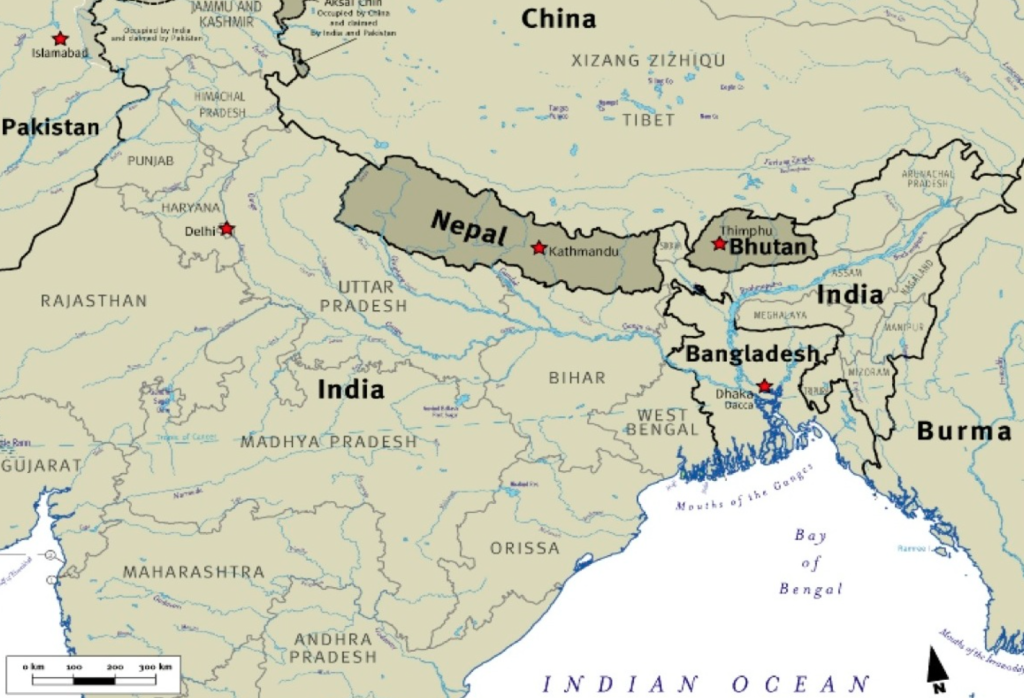 The moment you land in Bhutan you know to dial it down several notches. It is a slow moving and peaceful country.
The moment you land in Bhutan you know to dial it down several notches. It is a slow moving and peaceful country.
To safeguard its environment, religion and culture, the country has adopted a controlled tourism policy. Although there is no longer a restriction on visitor numbers; all tourists have to pay a minimum daily tourist fee of approximately $250 US. This accompanied with a minimum amount of airline flights into the country, it is, while not as untouched as one might imagine, a country you know is special.
You can enter Bhutan by plane only through Thailand, Bangladesh, Burma, Nepal or India. There is only one international airport in Bhutan and that is Paro (only opened in 1983). You can drive into the country, but only if you are an Indian or Bhutanese citizen.
Paro is 7382 feet in altitude so some adjustment is needed right away, especially if you fly in from sea level.
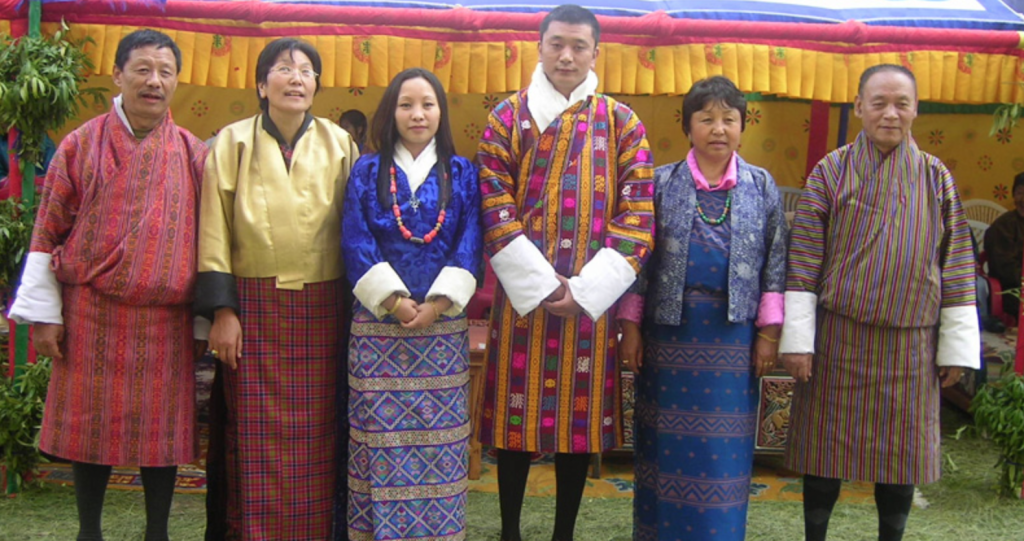 Dzongka is the official language, it is closely related in script to Tibetan, however Tibetans can not understand the spoken Dzongkha. There are 18 different dialects in the country but English is used as the language of education, so most everyone speaks English, and you see it on all the signs as well.
Dzongka is the official language, it is closely related in script to Tibetan, however Tibetans can not understand the spoken Dzongkha. There are 18 different dialects in the country but English is used as the language of education, so most everyone speaks English, and you see it on all the signs as well.
This is a Buddhist country, by that I mean that it infuses every pore and every breath of the people.
Relatively isolated until the 1950’s there is a great concern about the erosion of the culture. For this reason the traditional attire is required if one is working, especially in an official capacity. The male outfit is called the gho and the females is the kira.
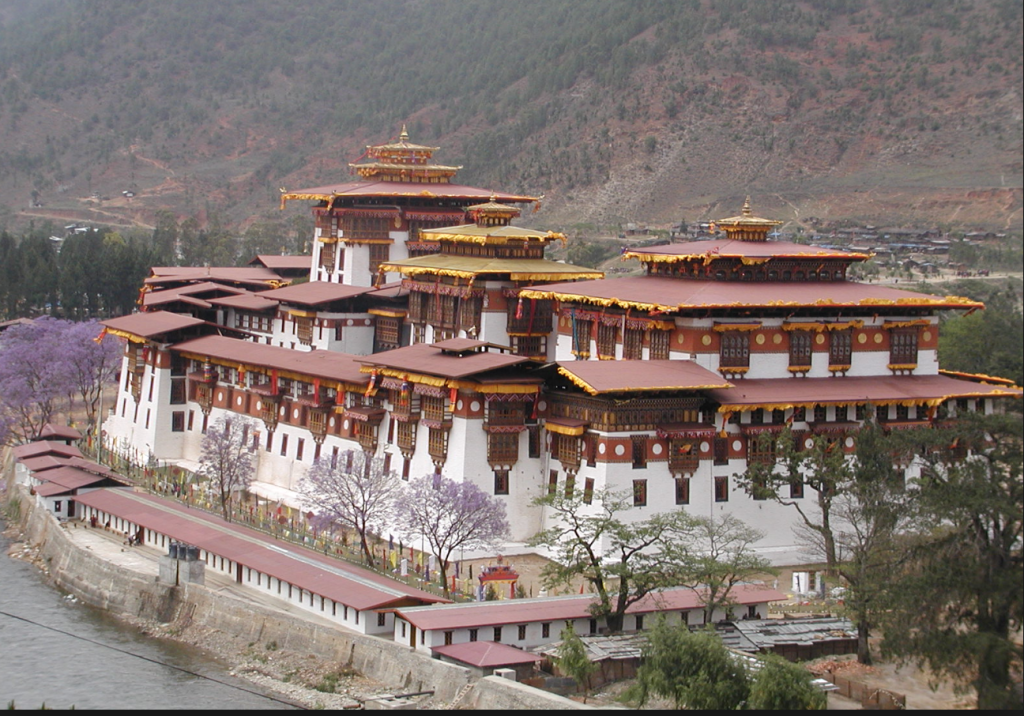 There is also a ban on non-traditional architecture. The architecture is simply stunning and I will be writing more about that later.
There is also a ban on non-traditional architecture. The architecture is simply stunning and I will be writing more about that later.
TV and the internet arrived in 1999, and I have been told that the cell phone has been the biggest factor of change rather than either of the other two mediums.
Until the 1960s Bhutan had no national currency, no telephones, no schools, hospitals and of course, no tourists, the roads are still not very well developed and yet the people are some of the most friendly and happy. This is the land where they measure wealth as Gross National Happiness after all.
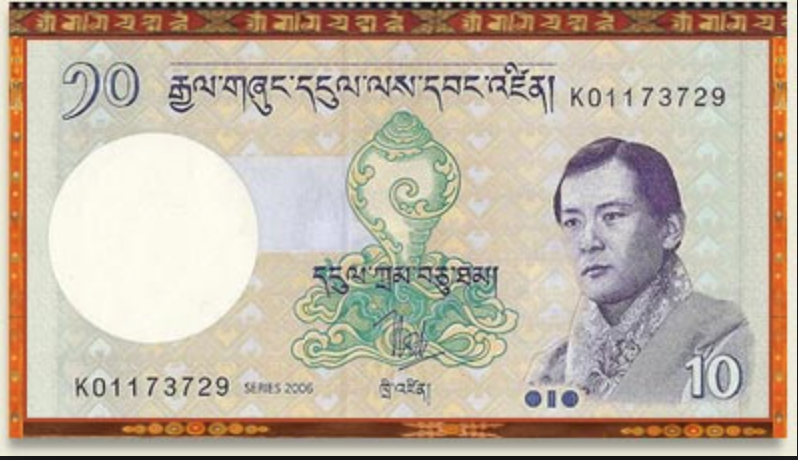 The currency is the Bhutanese Ngultrum, however, it is easier to travel with the Indian Rupee if you have come through that way. The exchange rate is 1 to 1 with the Rupee or about 65 to the US Dollar. The only down side to traveling with the rupee is that the Bhutanese do not take 500 or higher rupee bills, so I entered the country with only about $400 US, that was a stack of bills 4″ thick. This being said, they also don’t take anything but brand new American Dollars and heaven forbid they have writing or tears on the bills. You can change money very easily in the two large cities of Paro and Thimpu but it is not so easy in the more rural towns, ATMs are not yet a staple throughout the country, and credit cards are still a novelty outside of large establishments.
The currency is the Bhutanese Ngultrum, however, it is easier to travel with the Indian Rupee if you have come through that way. The exchange rate is 1 to 1 with the Rupee or about 65 to the US Dollar. The only down side to traveling with the rupee is that the Bhutanese do not take 500 or higher rupee bills, so I entered the country with only about $400 US, that was a stack of bills 4″ thick. This being said, they also don’t take anything but brand new American Dollars and heaven forbid they have writing or tears on the bills. You can change money very easily in the two large cities of Paro and Thimpu but it is not so easy in the more rural towns, ATMs are not yet a staple throughout the country, and credit cards are still a novelty outside of large establishments.
The Bhutanese flag was adopted in 1965 it features the Thunder Dragon, the country’s emblem. Yellow symbolizes the authority of the king, white represents purity and loyalty, while orange is symbolic of the Drukpa monasteries.
The Government of Bhutan has been a constitutional monarchy since July of 2008. Between 1907 and the 1950s, however, Bhutan was an absolute monarchy. The peaceful march to democracy has been a steady one. There is a council of ministers, headed by the Prime Minister. In 2007 a ban was lifted on political parties and a constitution was adopted in 2008. While all of this sounds very progressive the country is still working on the change from monarchy to democracy. They love their royal family, and there photos are everywhere. They are a stunningly beautiful people and it is reflected in the handsome king and beautiful queen.
The Bhutanese call their country Druk Yul or Land of the Thunder Dragon and The Druk Tsendhen (“The Thunder Dragon Kingdom”) is the national anthem.
The emblem of Bhutan features a vajra above a lotus, surmounted by a jewel, and framed by two druk. The vajra means both thunderbolt and diamond symbolizing both the properties of a diamond (indestructibility) and a thunderbolt (irresistible force).
That is a simplistic introduction to a complicated country, I will attempt to bring you far more in the coming weeks.
Suggested Reading:
Beyond the Sky and the Earth by Jamie Zeppa
Treasures of the Thunder Dragon by Her Majesty the Queen Mother Ashi Dorji Wangmo Wangchuck
Kuzuzangpo
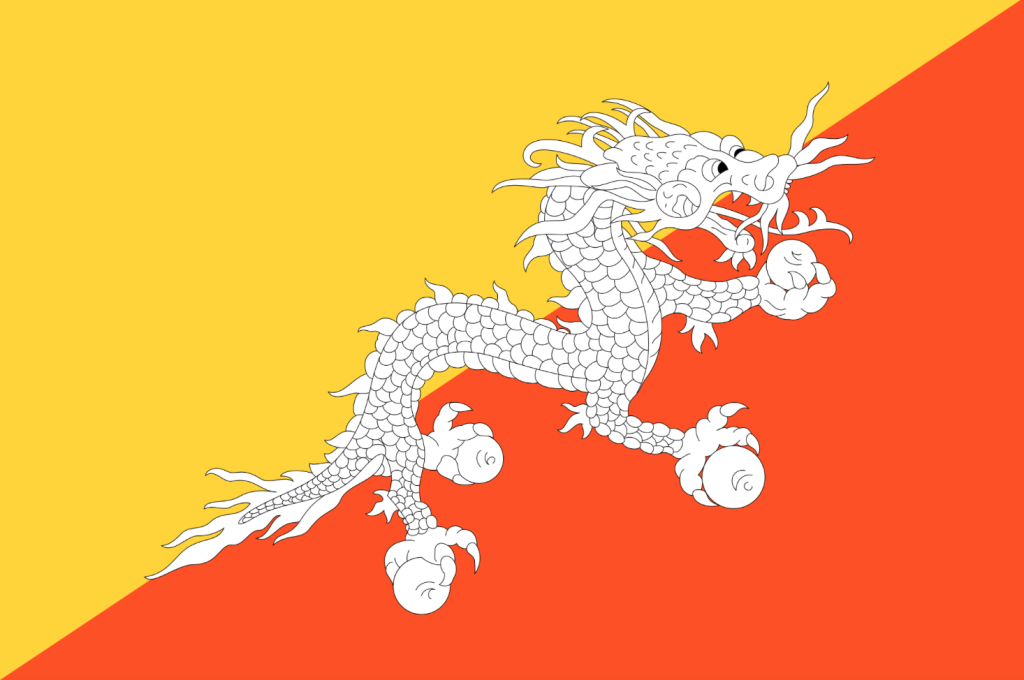
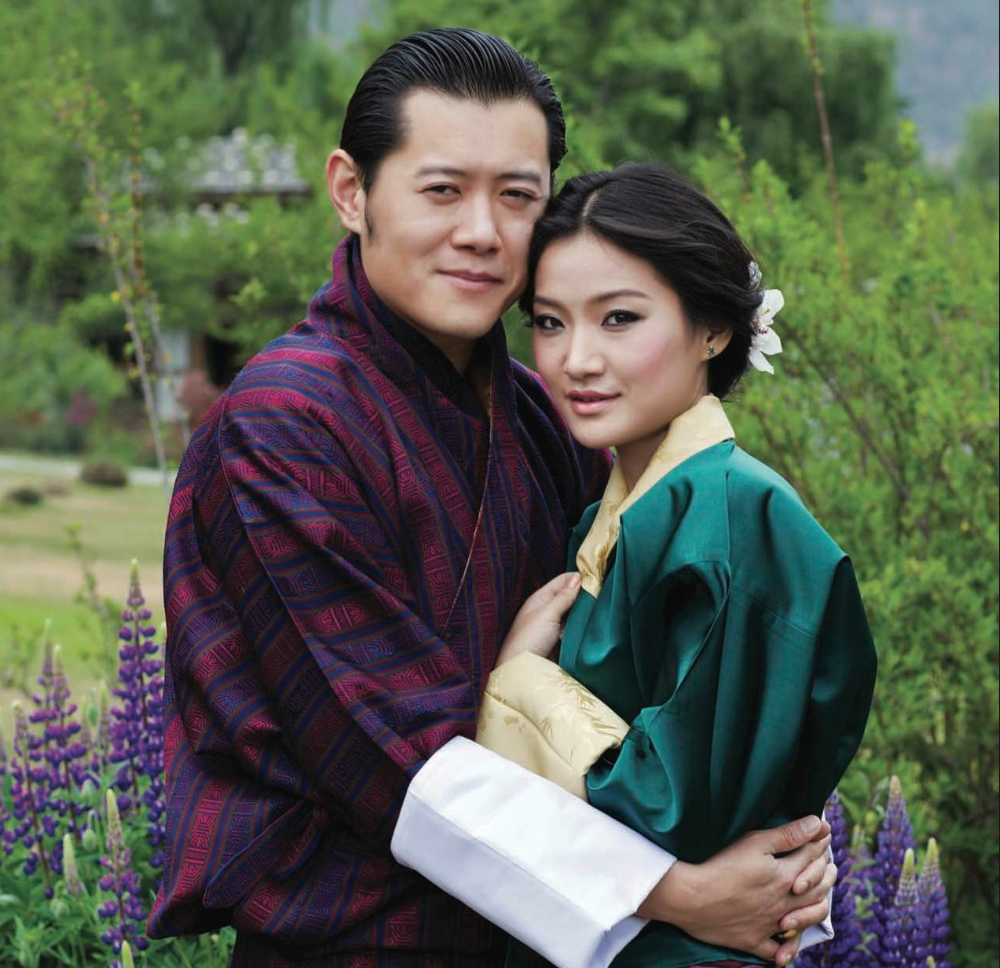
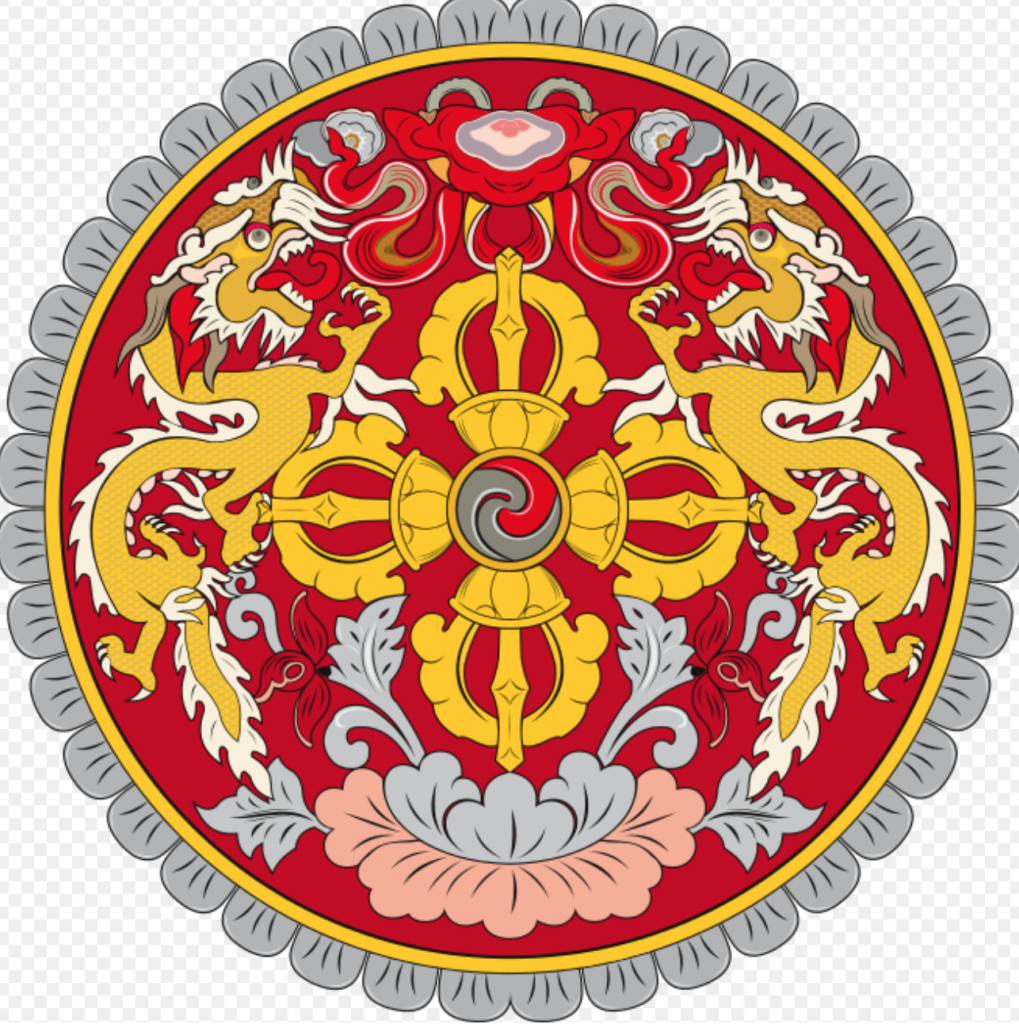
Enjoying reading about your travels and especially when with Glenn and Otis in Cuba.
Shortie
Enjoy reading about your travels especially when with Glenn and Otis in Cuba.